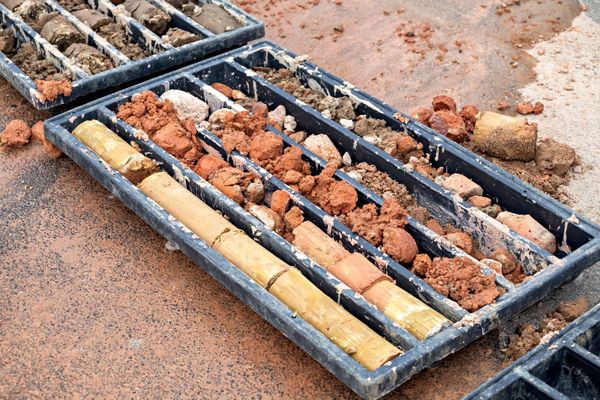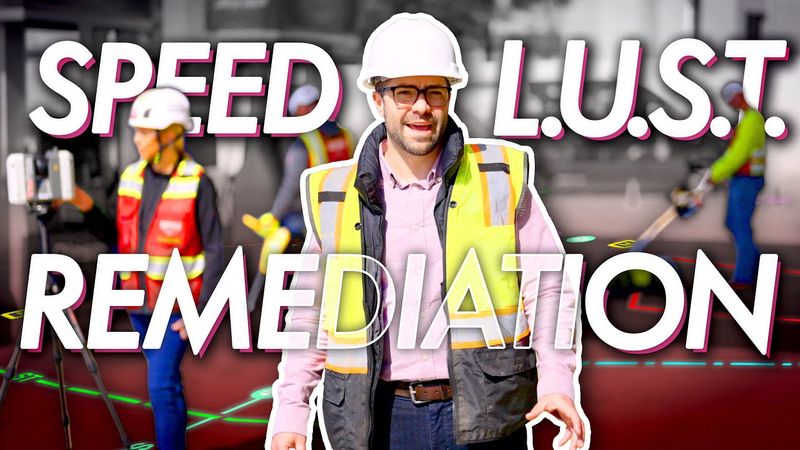Why Recognized Environmental Conditions (RECs) Are a Crucial Component of Environmental Due Diligence
Updates to ASTM standards underscore the need for comprehensive environmental due diligence, ensuring assessments align with contemporary risk management strategies.

Soil boring samples and testing are a key component of Phase II ESAs. Obtaining Soil boring clearances ensures that no subsurface utilities will be struck during sampling.
Environmental due diligence is integral to property transactions, particularly when evaluating potential liabilities associated with contamination. Phase I Environmental Site Assessments (ESAs) serve as a foundational step in identifying Recognized Environmental Conditions (RECs), which signify environmental risks that may warrant further investigation or remediation.
Definition and Regulatory Framework
The ASTM E1527-21 standard provides a precise definition of RECs, essential for environmental professionals assessing site conditions. A REC is characterized by:
- The presence of hazardous substances or petroleum products due to an environmental release.
- The likely presence of such substances resulting from a past or potential release.
- Conditions that present a material threat of a future release.
Understanding RECs is critical for stakeholders as they assess liability, compliance, and financial risks associated with property ownership or redevelopment.
Evolution of REC Standards
Over time, ASTM standards have evolved to enhance clarity and applicability in environmental assessments. The latest iteration, ASTM E1527-21, refines previous definitions found in E1527-05 and E1527-13, reflecting advancements in regulatory expectations and technical evaluations. These updates underscore the need for comprehensive environmental due diligence, ensuring assessments align with contemporary risk management strategies.
Categories of RECs
Environmental consultants classify RECs into distinct categories, aiding in their evaluation:
- Historical Recognized Environmental Condition (HREC) – A past release that has been addressed to regulatory satisfaction, meeting unrestricted use criteria.
- Controlled Recognized Environmental Condition (CREC) – A mitigated release where contaminants remain under prescribed controls (e.g., land use restrictions, engineering barriers).
- De Minimis Condition/Environmental Concern – A condition that does not qualify as a REC due to its negligible risk but remains relevant for consideration.
REC Identification Process
Detecting RECs within a Phase I ESA involves a structured methodology:
- Records Review – Examining historical site data, regulatory files, and land use documentation.
- Site Reconnaissance – Conducting on-site inspections to identify visual indicators of contamination.
- Stakeholder Interviews – Engaging property owners, tenants, and authorities to gather operational history and environmental concerns.
- Technical Reporting – Compiling findings into a Phase I ESA report, detailing potential environmental risks and recommending necessary actions.
Implications of RECs for Property Stakeholders
The presence of RECs influences decision-making across financial, legal, and operational domains:
- Financial Considerations – Remediation costs and compliance obligations impact property valuation and investment feasibility.
- Legal Compliance – Failing to address RECs can lead to regulatory enforcement actions, lawsuits, and reputational damage.
- Transaction Delays – Environmental liabilities can prolong negotiations and require specialized assessments before finalizing agreements.
Managing RECs Through Due Diligence
Effectively addressing RECs necessitates targeted environmental investigations and remediation strategies:
- Phase II ESA Implementation – Conducting soil and groundwater sampling to delineate contamination.
- Remediation Efforts – Deploying cleanup techniques such as excavation, filtration, and containment systems.
- Long-Term Monitoring – Establishing risk management programs to ensure compliance with environmental regulations.
Soil Boring Clearances and Subsurface Utility Mapping in Environmental Due Diligence
A critical component of environmental assessments—particularly Phase II ESAs—is subsurface investigation through soil borings, groundwater sampling, and related intrusive testing. However, one of the most significant risks in conducting these investigations is the potential for striking underground utilities, causing costly delays, safety hazards, and regulatory complications.
Soil boring clearance ensures that designated boring locations are free from underground utilities, enabling safe and efficient drilling. By employing advanced subsurface utility mapping technologies such as ground penetrating radar (GPR) and electromagnetic (EM) locators, environmental consultants can visualize and verify utility placements before proceeding with soil borings. This process minimizes project risks and prevents utility strikes, ultimately expediting environmental investigations and reducing costs.
GPRS specializes in precise subsurface utility mapping, offering real-time insights to optimize site assessments. Our expertise in utility locating directly supports Phase II ESA investigations, allowing environmental professionals to conduct safe, reliable, and timely due diligence.
How GPRS Enhances REC Assessments
Environmental professionals and stakeholders rely on accurate subsurface data to facilitate REC evaluations. GPRS specializes in advanced subsurface investigation techniques, supporting ESA initiatives with high-resolution imaging technologies.
Through industry-leading solutions—such as ground penetrating radar (GPR), electromagnetic (EM) location, video pipe inspection (VPI), acoustic leak detection, and other advanced methodologies—GPRS enables precise visualization of subsurface conditions. These capabilities enhance risk assessments, ensuring environmental due diligence meets regulatory and operational standards.
With a nationwide presence, GPRS mobilizes rapidly for Phase I and Phase II ESA projects, equipping environmental consultants with actionable insights to mitigate risks, optimize compliance strategies, and support efficient project execution
GPRS Intelligently Visualizes The Built World® for customers nationwide. What can we help you visualize?

